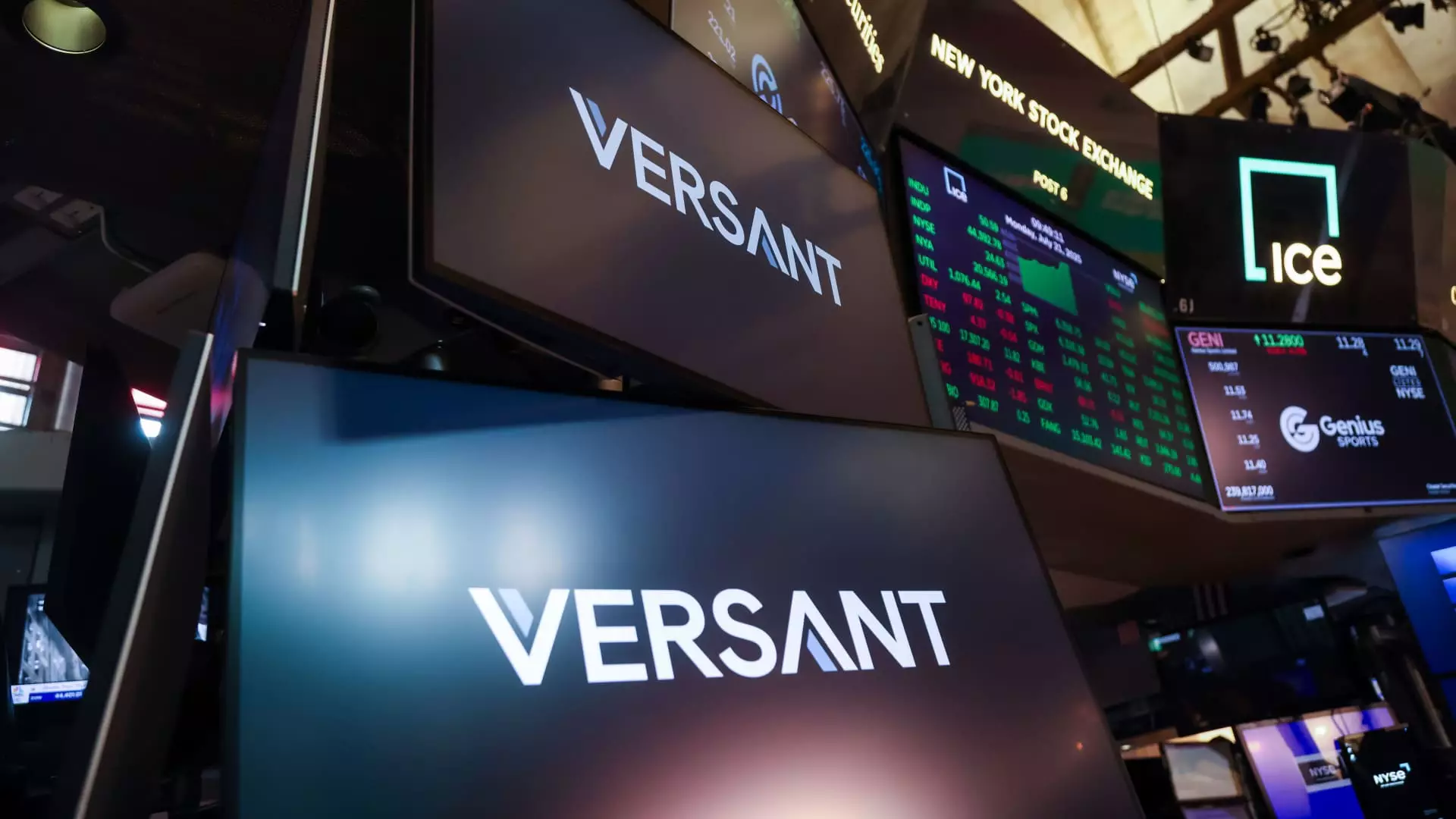In the unfolding narrative of corporate media restructuring, Comcast’s announcement of Versant’s impending independence signals an attempt to rebrand, reconfigure, and possibly reinvent segments of its vast media empire. However, beneath the veneer of strategic diversification lies a complex web of vested interests, legacy corporate influence, and questionable independence. While the company touts this move as a step toward a “leading independent media company,” a critical eye raises doubts about whether it’s a strategic evolution or a masterful reshuffling aimed merely at appeasing regulatory pressures and safeguarding corporate profits—a typical maneuver in the ongoing consolidation of media control.
At its core, the formation of Versant appears as an acknowledgment of the mounting pressure from shareholders and regulators to diversify risk and transparency. Yet, the selection of board members—comprising individuals predominantly from finance, legacy media, and corporate backgrounds—raises questions about true independence. With former CEOs, seasoned board members connected to major financial institutions and veteran media executives, it’s difficult to see this formation as a bold step toward genuine content independence. Rather, these appointments seem more like a carefully curated lineup designed to preserve the existing power structures within a new corporate facade.
A New Face, Same Old Power Dynamics
The lineup of Versant’s board members highlights an interesting paradox: a blend of industry veterans and elite financiers, all of whom are tightly woven into the fabric of corporate America. For instance, David Novak’s leadership experience and tenure as a CEO of Yum Brands, combined with Rebecca Campbell’s Disney pedigree, suggest a focus on maintaining existing industry dominance rather than fostering innovation or independence. These figures, while credentialed, are emblematic of the entrenched corporate class that favors stability over upheaval—a trend that undermines claims of breaking free from traditional media monopolies.
Moreover, the appointment of individuals involved with financial institutions and investment funds—Len Potter of Wildcat Capital Management and Vida Ventures, for example—shifts focus away from content creation and toward financial engineering. This signals that Versant’s strategic blueprint is rooted more in optimizing valuation, spinning-off assets for profit, and maintaining favorable relationships with Wall Street than in empowering consumer voices or diversifying editorial perspectives. Such appointments reinforce an emerging concern: that media independence may be a crafted narrative, masking underlying financial motives that ultimately serve corporate interests.
Media as a Commodity, Not a Public Good
The implications of this strategic realignment extend beyond corporate boardrooms into the realm of public discourse. When media assets—such as CNBC, MSNBC, and the Golf Channel—are spun off primarily to appease shareholders or regulators, the core issue becomes evident: the commodification of information. The consolidation and reorganization of these channels into a more financially opaque entity threaten the diversity of voices and the watchdog function that independent media must serve.
In this scenario, Versant’s move might superficially appear as a leap toward independence, but it is more accurately a retreat into corporate fortification. By creating a separate legal entity, Comcast can shed certain regulatory responsibilities and liabilities, thereby controlling content and infrastructure without the scrutiny of a unified conglomerate. This strategic maneuver invites skepticism about whether the public will truly benefit from a more autonomous media landscape or if what we are witnessing is simply a redefinition of corporate boundaries designed to protect profits, limit accountability, and perpetuate existing power asymmetries.
The Illusion of Innovation Amidst Conventional Wisdom
An intriguing aspect of Versant’s team is the inclusion of figures like David Eun, a veteran in technology and artificial intelligence. While this hints at a possible future where media integration with cutting-edge tech could be transformative, history suggests caution. The involvement of such technologists is often symbolic rather than substantive unless accompanied by meaningful shifts in content governance and democratization.
Glaringly absent are voices centered on public interest, media literacy, or democratic engagement. The absence of such perspectives signals that the real goal remains profit maximization and maintaining the status quo of corporate media control. The inclusion of diverse backgrounds does little to offset the overarching agenda: consolidating control, reducing transparency, and viewing media assets as mere commodities rather than vital elements of civic life.
What we are witnessing is a cautious, calculated repositioning that allows old power brokers to preserve influence under the guise of innovation and independence. Far from a breakthrough for media democracy, Versant’s formation seems to be merely another chapter in the ongoing saga of corporate consolidation—one masked as a progressive step but fundamentally rooted in the same desire for control, influence, and profit.

